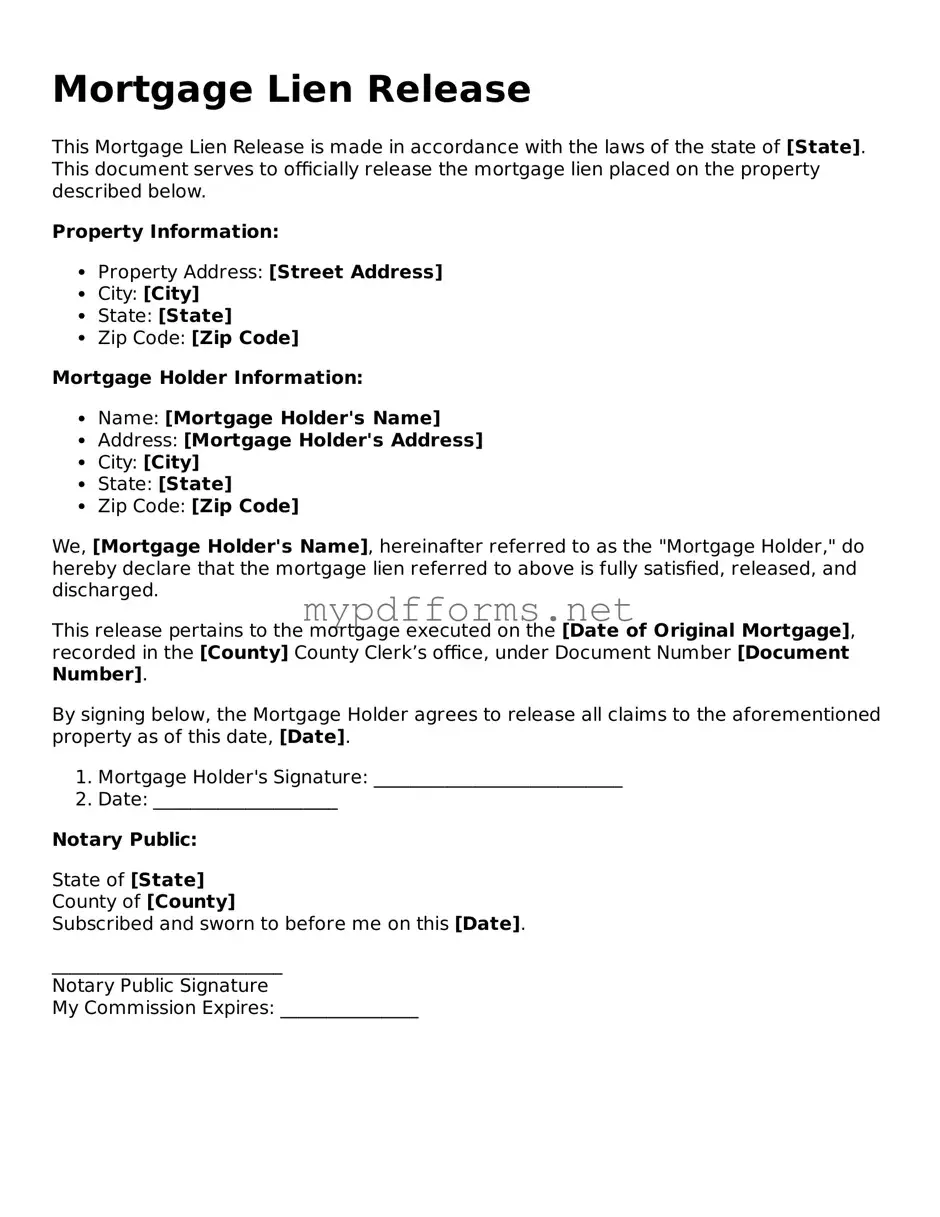The Mortgage Satisfaction form is quite similar to the Mortgage Lien Release form. Both documents serve to confirm that a borrower has fulfilled their obligations under a mortgage agreement. When a mortgage is paid off, the lender issues a Mortgage Satisfaction form, which indicates that the mortgage is no longer in effect. This document is essential for the homeowner to clear their title and remove any claims the lender had against the property.
The Deed of Reconveyance is another document that closely resembles the Mortgage Lien Release form. Used primarily in states with a deed of trust system, this document is executed by the trustee to transfer the property back to the borrower once the loan is paid off. Like the Mortgage Lien Release, it signifies that the borrower has satisfied their debt and that the lender no longer has a claim on the property.
A Certificate of Satisfaction is also akin to the Mortgage Lien Release form. This document serves as proof that a mortgage has been fully paid. It is typically recorded with the county recorder’s office, ensuring that the public record reflects the homeowner's clear title. Both forms are essential for homeowners who wish to sell or refinance their property in the future.
The Subordination Agreement can be compared to the Mortgage Lien Release form in that it alters the priority of liens on a property. While it does not release a lien, it allows a lower-priority lien to take precedence over a higher-priority one. This agreement is often necessary when refinancing or taking on additional loans, ensuring that all parties are aware of their standing regarding the property.
The Release of Lien document is another important form that shares similarities with the Mortgage Lien Release. This document is used to officially remove a lien from a property, confirming that the debt associated with the lien has been satisfied. Like the Mortgage Lien Release, it is crucial for maintaining a clear title and ensuring that the property can be sold or refinanced without complications.
A Quitclaim Deed is somewhat related to the Mortgage Lien Release form, although it serves a different purpose. This document transfers any interest one party has in a property to another party without guaranteeing that the title is clear. While it does not release a lien, it can be used in conjunction with a Mortgage Lien Release to clarify ownership after a mortgage has been satisfied.
The Satisfaction of Judgment is another document that bears resemblance to the Mortgage Lien Release form. This document is filed when a court judgment has been paid or settled. It indicates that the debtor has fulfilled their obligation, similar to how a Mortgage Lien Release confirms that a mortgage has been paid off. Both documents aim to clear the title and remove any claims against the property.
Understanding the various forms involved in property transactions is crucial, especially when it comes to legal protections such as the Release of Liability form. This document, which can be accessed through Missouri PDF Forms, helps ensure that individuals and organizations are safeguarded against potential claims for injuries or damages incurred during specific activities, providing clarity and comfort to all parties involved.
The Assignment of Mortgage is similar in that it involves the transfer of rights related to a mortgage. While it does not release a lien, it can be an essential step in the process of transferring ownership of the mortgage from one lender to another. This document helps clarify who holds the rights to the mortgage, which can be important for future transactions involving the property.
Finally, the Affidavit of Heirship can be compared to the Mortgage Lien Release form in terms of establishing clear ownership of a property. This document is used when a property owner passes away without a will. It helps clarify the heirs' rights to the property, similar to how a Mortgage Lien Release clarifies that a mortgage has been satisfied and that the homeowner has clear title.
